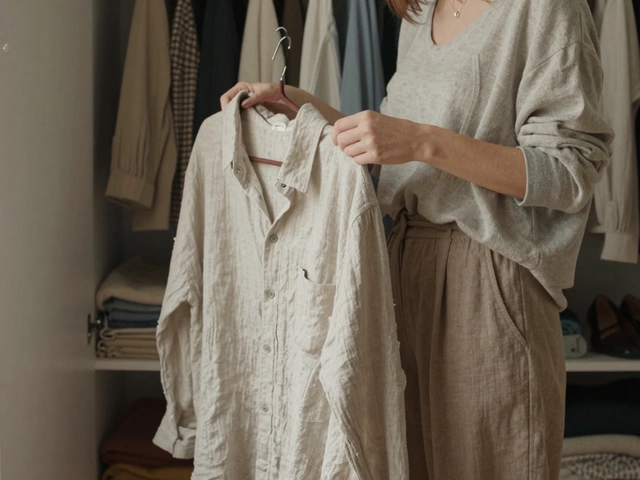So, you've decided to go green and switch to eco-friendly products. Congratulations on the planet-loving move! But hey, before you dive headfirst into the sustainable shopping spree, let's chat about some of the sneaky downsides you might bump into.
First off, eco-friendly can mean extra pricey. Yup, those budget-friendly finds at your usual store? They might be a bit more luxurious for your wallet when swapped with their green counterparts. It's not about shelling out extra cash, but rather finding the balance between sustainability and financial practicality.
Then there's the catch of availability. You might find that your local store's eco-section isn't exactly flourishing. Sometimes, scoring that perfect eco-friendly product means a more extended hunt, or even resorting to online purchases, which could offset some of your eco-gains thanks to shipping practices.
- Cost Concerns
- Availability Issues
- Greenwashing Woes
- Limited Product Lifespan
- Consumer Responsibility
Cost Concerns
Let's be real: going green isn't always easy on the wallet. One of the biggest hurdles with eco-friendly products is the price tag. Sure, helping the environment is great, but when your grocery bill suddenly spikes, it makes you think twice.
So, why exactly do these sustainable options cost more? A big reason is the materials. Renewable resources, organic farming, and fair-trade practices tend to drive up production costs. Companies often invest more in sustainable technologies and pay fair wages to workers, which is fantastic but can make items pricier.
Take organic cotton products, for instance. They require more land and labor compared to conventional cotton. This naturally results in a higher price. And then there's bamboo, a sustainable superstar! But transforming it into the soft textile that we love isn't cheap or simple.
Let's have a look at some indicative prices to see how they stack up:
| Product | Eco-Friendly Option Cost | Regular Product Cost |
|---|---|---|
| T-shirt | $30 | $15 |
| Cleaning Supplies | $10 | $5 |
| Bedding Set | $100 | $50 |
Now, it's not all doom and gloom. Being an eco-conscious shopper means looking for discounts, and sometimes, buying in bulk or during sales can help keep costs down.
Moreover, some folks find they're spending less in other areas. For instance, buying quality eco-friendly products might mean fewer replacements down the road. So, while the initial cost is higher, long-term savings can be a thing if you're smart about it. But the upfront cost concern? Yeah, it’s definitely something to keep in mind.
Availability Issues
Alright, let's talk about finding eco-friendly products. Sometimes, it's easier said than done. Depending on where you live, the selection could be a bit skimpy. Big cities might have those fancy green stores with lots of options, but if you're in a smaller town? You might be stuck with just a couple of choices at your local supermarket.
Now, if you're committed, you'll probably look online. This opens up a whole new can of worms. While you get access to a wide range of sustainable options, there's the whole shipping dilemma to consider. All those packages can add up to your carbon footprint, kind of canceling out your eco-conscious choices, right?
For folks trying to make a spontaneous switch, finding specific sustainability items like eco-friendly cleaning supplies or biodegradable household goods can feel like a treasure hunt. Limited stock and shipping delays can be frustrating if you're trying to make immediate swaps.
Sustainability during seasonal changes can also pose a challenge. Did you know that certain products, like those made from recycled materials, often have production schedules that depend on the availability of those materials? That's right—sometimes these products are just out-of-stock at the weirdest times.
With this in mind, you might consider strategizing your buys. It helps to plan ahead and buy in bulk when you can to minimize the hassle of hunting high and low or waiting weeks for delivery.
- Try to identify reliable online stores that specialize in eco-products.
- Consider bulk buying to reduce shipping waste.
- Keep an eye on local markets or pop-up shops that might offer sustainability-focused products.
So yeah, the path to being more eco-friendly is paved with good intentions, but a few speed bumps. Stay patient and plan smart—it’ll pay off for you and the planet.

Greenwashing Woes
Let's dive into the murky waters of greenwashing. Ever noticed how everyone’s suddenly painting everything green and slapping on labels like 'eco-friendly' or 'sustainable'? Not all of these claims are legit. Greenwashing is when companies pretend to be more environmentally sound than they really are.
This can catch consumers off guard, thinking they're making a positive impact, when in reality, they might be just throwing money at clever marketing ploys. A prime example is when a product is labeled 'biodegradable,' yet no mention is made of the time it takes to break down or the conditions required. Some products might decompose in a month, while others can take decades!
So, how do you spot this gimmickry? Start by reading the labels carefully. Check for certifications from credible organizations like the Global Organic Textile Standard (GOTS) or the Forest Stewardship Council (FSC). These guys help ensure that what you’re buying truly meets those eco-friendly standards.
Also, Google is your friend! A quick search can reveal a lot about a company’s practices. If they're really committed to planet-saving actions, they'll be transparent about their methods and sourcing.
Here’s a tip: Watch for vague claims. Words like 'natural' or 'green' without specifics might be your clue that something’s off. Trust but verify.
Limited Product Lifespan
Alright, let's talk about an often overlooked hiccup when it comes to eco-friendly products—their lifespan. You might feel like you’re doing the planet a solid by buying sustainable, but some of these products just don’t last as long as their less green counterparts. It’s a bit of a bummer, isn’t it?
Take biodegradable utensils, for example. Great for reducing plastic waste, but they can sometimes start breaking down sooner than you'd like. If they're stored a bit too long or get a tad moist, well, you might find them less than usable when picnic time rolls around. In some cases, reusables are a better bet, but it's all about knowing what you're getting into.
Then consider the issue with natural fibers. Clothes made from materials like organic cotton or bamboo are super comfy and easy on the environment, but they might not be as durable as synthetic fibers that have been engineered for longevity. You could end up buying replacements more often, which isn’t always the most sustainable option long term.
An interesting stat to chew on: A typical cotton T-shirt may last about 20 to 30 wash cycles, whereas its synthetic cousin might hold up through 50 or even more. So, if you're hoping to keep your favorite tee around for a while, you’ll want to think about washing and care techniques to extend its life.
In the end, being informed is key. If you're shopping eco-friendly, it’s smart to check the labels and maybe even dive into some product reviews. Knowing how long something is likely to last can help you decide if it makes sense for your lifestyle and your wallet.

Consumer Responsibility
Alright, so here's the thing: snapping up eco-friendly products isn't just about picking something off the shelf and calling it a day. Nope, it's only part of the whole sustainability puzzle. As a consumer, you need to be a bit of a detective and a responsible earth lover all rolled into one.
First up, research is key. You've got to dig into what makes a product genuinely eco-friendly. It's not just about a green label or a catchy eco-logo. Check for certifications—and double-check if they're legit. Things like Fair Trade, USDA Organic, or even Energy Star can give you a better picture of a product's environmental impact.
Also, be aware of greenwashing. That's when companies slap eco-friendly claims on their products without really backing them up with sustainable practices. A lot of fuss over nothing. To avoid this, you can look up company practices, check online reviews, and maybe even contact the company for detailed info.
Let's not forget that being eco-friendly also means using products wisely. Even the best sustainable goods don't do the planet any favors if they're wasted. Whether it's squeezing every drop out of a shampoo bottle or making sure your eco-friendly tote gets used as much as possible, every bit helps.
- Reduce: Buy mindfully and only what you need.
- Reuse: Find new purposes for old items.
- Recycle: Properly dispose of or repurpose products.
- Rot: Compost organic waste when you can.
Also, don't overlook local options. Supporting local eco-friendly brands can cut down transportation emissions and bolster your community's economy.
And sure, going green demands some effort—like checking labels or figuring out product origins. But hey, the earth's future is kind of hanging in the balance, and every choice counts. So, embrace that role of a savvy, informed shopper. Whiskers would even give you a high paw for that!





